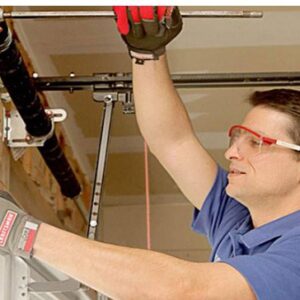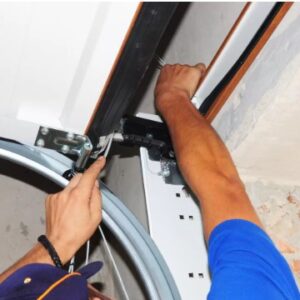Preparing your pet for a mobile vet visit is different from taking them to a clinic. The visit happens in your home, so it’s calmer for your pet and easier for you. But to make the most of the appointment, a little preparation helps things go smoothly. Here’s how we can get our pets ready so the vet can focus on care, not chaos.
Understand What to Expect
A mobile vet appointment feels less formal than a clinic visit but still requires organization. The veterinarian arrives with the necessary equipment for exams, vaccinations, or treatments. The visit usually takes place in a quiet area of your home where your pet feels secure.
We should plan for about 30 to 60 minutes depending on the type of service. The vet may ask for your pet’s health history, vaccination records, and any recent behavioral or diet changes. Having these ready saves time. It also helps to know that mobile veterinary services often include diagnostics, lab tests, and prescriptions right from the mobile unit, so we can handle most concerns in one visit.
Choose the Right Spot for the Exam
The place we choose matters more than people realize. A calm, well-lit space makes the exam easier for everyone. Pets react to our energy, so if we seem relaxed, they will too.
For cats, smaller enclosed rooms such as a bathroom or laundry room work best. These limit hiding spots and reduce anxiety. Dogs often feel comfortable in living rooms or kitchens, but avoid spaces with distractions like open doors or other pets.
Before the vet arrives, tidy the area so there’s room for their equipment. Keep the floor dry and remove items your pet might trip over. If you have multiple pets, keep others in a separate room until it’s their turn.
Get Your Pet Used to Gentle Handling
Many pets are nervous about being touched by someone new. We can help them feel more comfortable by mimicking gentle exam handling at home. Try lightly touching their paws, ears, or mouth for short periods while rewarding them with treats.
The goal isn’t to train them to love it overnight but to make it familiar. When the vet examines them, those areas won’t feel as foreign. Short, positive sessions a few times before the visit make a big difference.
Gather All Medical Information in Advance
Having your pet’s medical details ready helps the vet provide better care. Write down your pet’s age, breed, diet, exercise habits, and any health concerns. Include previous test results or vaccination records if available.
If your pet takes medication, note the dosage and schedule. If you’re unsure whether the mobile vet can perform a specific service, it’s wise to confirm ahead of time through their website or by scheduling through the contact us page. Clear communication avoids surprises and ensures your pet gets the care they need.
Minimize Stress Before the Visit
Pets can sense changes in our mood and routine. Avoid signaling that something unusual is happening. Instead, keep your routine as normal as possible.
Feed your pet their usual meals and give them enough time for a walk or play session before the appointment. A little exercise helps burn off nervous energy. For cats, try pheromone diffusers or calming sprays an hour before the vet arrives. Dogs often benefit from background music or calm interaction before the visit.
Avoid loud noises, vacuuming, or introducing new people to the home right before the appointment. The goal is a peaceful atmosphere that reassures your pet.
Make Access Easy for the Vet
When the mobile vet arrives, they’ll need a clear path to the exam area and access to a sink or electrical outlet if required. Unlock gates and ensure parking is available close to your home, especially if you live in an apartment or condo.
If you have a large dog or an anxious animal, using a leash or carrier is still helpful even though the appointment is at home. It prevents your pet from running off when someone new enters the house. For multi-pet homes, have each pet ready one at a time to maintain order.
Keep Treats and Comfort Items Nearby
Rewards make a huge difference. Prepare your pet’s favorite treats before the vet arrives. These can distract them during exams and turn the experience into something positive.
Some pets also relax when surrounded by familiar smells. Keep their blanket, toy, or bed close during the visit. Cats may calm down in a carrier with the door open if they can hide for a few moments. Dogs might settle faster with a chew toy or small snack once the exam is done.
If your pet gets nervous easily, let the vet know ahead of time. Mobile veterinarians are used to adapting their approach based on your pet’s temperament.
Support the Vet During the Visit
During the exam, the vet might ask us to help hold or comfort our pet. Staying calm helps them stay calm. Use a steady voice, speak gently, and follow the vet’s instructions. Avoid sudden movements that might startle the animal.
If your pet reacts with fear or aggression, don’t panic. Step back and let the vet take the lead. They are trained to handle those situations safely. The goal is to make the visit smooth, not to force cooperation.
When the exam ends, ask any questions you have while the vet is still there. If they give you medication or follow-up instructions, write them down. Mobile vets often provide digital records afterward, so it’s easy to keep track of what was done.
Plan for Aftercare
After the vet leaves, let your pet rest. Even calm animals can feel tired from the experience. Give them space, water, and comfort. Avoid introducing new activities or guests right after the visit.
If the vet administered vaccines or medication, monitor your pet for mild side effects like slight swelling or drowsiness. These usually fade within a day. If anything seems off, follow up promptly with the vet for guidance.
You can also schedule follow-ups or discuss future visits in advance through the online contact us form. Regular home visits build familiarity and reduce stress for your pet over time.
Prepare for Emergencies
While mobile veterinary services handle most routine and urgent needs, it’s smart to know when an emergency hospital might be necessary. Ask your vet what situations require immediate in-clinic care, such as severe injuries or ongoing seizures.
Keep a list of local emergency clinics handy. It’s rare that a mobile visit turns into an emergency, but preparation gives peace of mind. Most mobile vets will guide you quickly to the right facility if needed.
Maintain a Routine for Future Visits
The more consistent we are, the easier each visit becomes. Keep your pet’s appointments around the same time of day and use the same quiet space for every checkup. Over time, your pet will associate the process with safety, not fear.
Try to schedule follow-up visits before major changes in routine, such as moving homes or introducing new pets. The stability of a regular vet schedule prevents many health and behavioral issues from escalating.
If your pet has ongoing conditions that need monitoring, mobile care can make it easier to stay consistent. Home visits remove the transportation stress that often delays checkups.
Communicate Openly with the Vet
The best care depends on honest communication. Tell your vet about your pet’s behavior, diet changes, or any small symptoms you’ve noticed. Even minor details help them form a complete picture of your pet’s health.
It’s also fine to express any concerns about the visit itself. If your pet reacts strongly or you’re unsure how to prepare better next time, share that. Mobile vets adjust their methods to fit each household’s needs. The more they know, the better the care your pet receives.
Create Positive Associations for Next Time
A good experience makes future visits easier. After the vet leaves, reward your pet with attention, playtime, or a special treat. Praise them calmly and show affection so they remember the visit as something safe.
Avoid scolding or showing frustration if your pet was nervous or uncooperative. Fear fades faster when replaced by calm reassurance. By keeping the end of the visit positive, you set the tone for smoother experiences in the future.
Keep the Environment Familiar
If possible, keep the same setup for every mobile vet visit. Use the same room, same towel, or same mat where the exam took place. Familiarity reduces anxiety and allows the vet to work more efficiently.
Try not to rearrange the room right before the visit or introduce unfamiliar smells like new cleaning products. Small environmental changes can affect sensitive pets, especially cats. A stable environment helps them feel safe.
Understand the Benefits of Home Care
Preparing for a mobile vet visit is about more than convenience. It’s about building trust and keeping your pet healthy in an environment they know. Home visits reduce travel stress, exposure to other animals, and waiting-room anxiety.
They also allow the vet to observe your pet in their natural setting. This can reveal issues that might go unnoticed in a clinic, such as mobility challenges or behavioral triggers. With every visit, both you and your pet grow more confident in the process.
Frequently Asked Questions
How long does a mobile vet appointment take?
Most visits last between 30 minutes and an hour, depending on the type of service and your pet’s condition.
Should I keep my cat in a carrier before the vet arrives?
Yes. A carrier keeps your cat calm and prevents hiding. Open the carrier door once the vet is ready to begin.
Can mobile vets perform vaccinations and lab work?
Yes. Mobile veterinarians carry the necessary equipment for vaccines, blood tests, and many diagnostic services.
What if my pet is aggressive or fearful during the visit?
Let the vet know ahead of time. They can prepare accordingly and use gentle, safe methods to complete the exam.
How often should I schedule mobile vet visits?
Annual checkups are standard, but older pets or those with health issues may benefit from more frequent visits.





